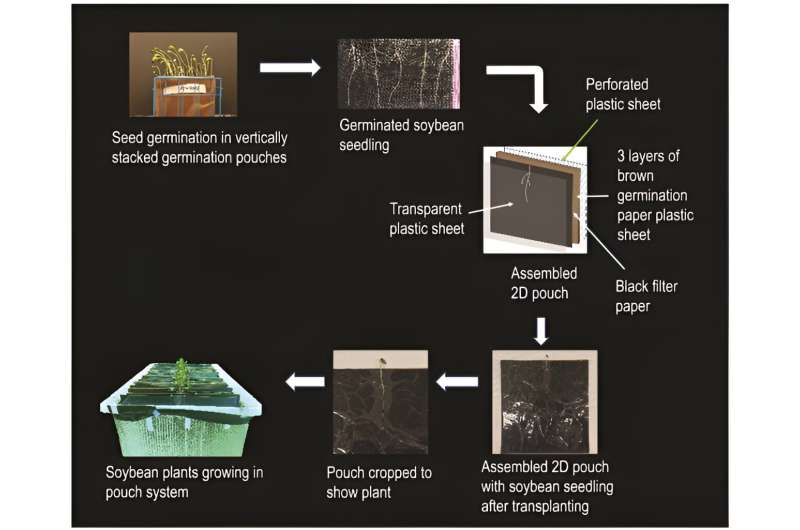This article has been reviewed according to Science X's editorial process and policies. Editors have highlighted the following attributes while ensuring the content's credibility:
fact-checked
proofread
Innovations in 2D root phenotyping uncover genetic keys to enhanced agricultural productivity

Root system architecture (RSA) plays a pivotal role in plant yield, shaped by evolution and ecological adaptations for effective nutrient and water uptake and abiotic stress resistance.
Current research focuses on utilizing genetic variation in RSA to enhance agricultural productivity, with significant progress in identifying genes like Pstol1 that improve nutrient acquisition and yield in various crops. However, RSA is complex and environmentally responsive, posing challenges to its study and application.
Major issues include the limitations of in situ phenotyping techniques and the need to better understand the genetic and environmental influences on RSA. Therefore, the development of advanced phenotyping methods and a more profound exploration of the genetic underpinnings of RSA are important for improving crop efficiency and yield.
Plant Phenomics published a research article titled "Application of an Improved 2-Dimensional High-Throughput Soybean Root Phenotyping Platform to Identify Novel Genetic Variants Regulating Root Architecture Traits."
This study innovated the 2D root growth pouch system, root imaging, and image processing to improve the accuracy of root trait calculations. It employed a revised germination method using vertically stacked, water-soaked paper to maintain root initiation angles and minimize changes in root architecture.
By switching from traditional blue to black filter paper, this study significantly increased root-to-background contrast and improved the accuracy of root trait segmentation algorithms. Additionally, to avoid overestimation of root traits caused by water menisci, the study compared air-imaged roots with those imaged underwater and found that underwater imaging provided more accurate trait measurements.
This method also addressed the issue of small white particles being miscounted as root tips by implementing an image segmentation and cleaning pipeline that significantly improved the correlation between manual and calculated root tip counts. Broad-sense heritability calculations indicated moderately high to high reproducibility of root trait measurements.
The study also modified the pouch design by replacing the solid backing with a perforated sheet and aerating the nutrient solution, which notably increased root growth.
Population structure analysis suggested a correlation between soybean genetic variation and country of origin. Extensive phenotypic variation was observed among soybean genotypes, and GWAS identified numerous loci related to root traits, with several "hotspots" for multiple trait associations.
Promising candidate genes were identified near the GWAS peaks, and structural variations in the promoter regions of some of these genes were investigated. The distribution of RSA traits among subpopulations showed patterns aligned with country of origin, indicating genetic and environmental influences on root traits.
Phenotypic validation of root COPM in a potting mix affirmed the representativeness of hydroponic pouch system results, highlighting the study's methodological robustness and its implications for understanding and manipulating root architecture for agricultural improvement.
Overall, this research offers a promising avenue for future breeding programs focused on developing more resilient and efficient crops, with the potential for significant agricultural and environmental benefits.
More information: Rahul Chandnani et al, Application of an Improved 2-Dimensional High-Throughput Soybean Root Phenotyping Platform to Identify Novel Genetic Variants Regulating Root Architecture Traits, Plant Phenomics (2023). DOI: 10.34133/plantphenomics.0097
Provided by Plant Phenomics





















